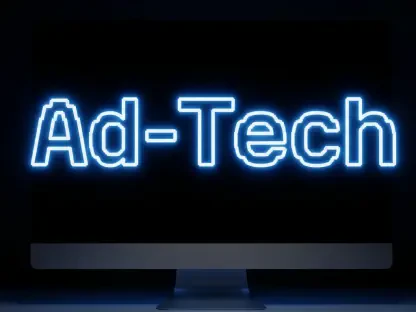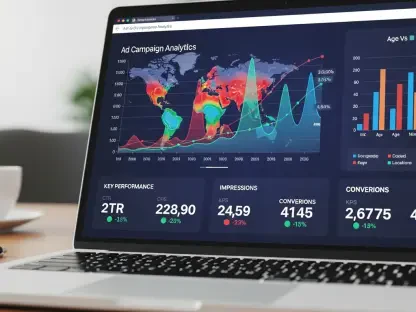In the fast-evolving world of e-commerce, staying ahead of technological changes is crucial for success. Anastasia Braitsik, a leading expert in SEO, content marketing, and data analytics, is here to shed light on Shopify’s latest checkout updates and their implications for Google Ads or Analytics users. As merchants grapple with migration deadlines and system updates, Anastasia offers valuable insights into navigating these transitions effectively.
What changes is Shopify implementing with its checkout process that affect Google Ads or Analytics users?
Shopify is altering its checkout system, which requires users of Google Ads or Analytics to adapt by migrating their Google Tags. This update emphasizes accessing conversion data on the Thank You and Order Status pages, using the new Google & YouTube app, which facilitates improved integration and functionality.
What are the key deadlines for these changes, and what happens if merchants miss them?
The migration deadlines are clear-cut: Shopify Plus merchants have until August 28, 2025, while non-Plus merchants must complete migration by August 26, 2026. Missing these deadlines could mean losing all conversion tracking capabilities on pivotal pages, potentially crippling ad performance and analytics insights.
What is the recommended solution for integrating Google services with Shopify’s new checkout system?
The Google & YouTube app is highly recommended for integrating with Shopify’s overhauled checkout system. This app streamlines the process, ensuring seamless connectivity with Google services like Ads, Analytics, YouTube, and Merchant Center, without requiring cumbersome coding solutions.
How does the Google & YouTube app benefit Shopify users in terms of integration and functionality?
The app simplifies integration by offering a no-code solution, which makes it accessible and effortless. Enhanced features, such as Enhanced Conversions and Customer Match, are easily unlocked, positioning merchants to leverage Shopify’s evolving checkout capabilities for superior performance.
Why is it important for merchants to migrate their Google tags now rather than later?
Migrating now allows merchants to future-proof their operations by aligning with Shopify’s checkout enhancements. Delaying migration risks losing essential conversion tracking data, which is crucial for optimizing advertising strategies and maintaining accurate reporting metrics.
How does the phase-out of legacy methods by Shopify impact merchants who still use them for Google tags installation?
With Shopify phasing out legacy methods like checkout.liquid and “additional scripts,” merchants relying on these outdated approaches may face significant disruptions. The end of these methods necessitates immediate action to avoid data loss and ensure continued tracking and reporting efficiency.
Which merchants need to take action regarding the migration of Google tags to the Google & YouTube app?
Merchants utilizing Google tags in checkout.liquid (for Shopify Plus), “Order status page additional scripts,” or those with custom pixel setups and legacy Google Analytics configurations are urged to migrate to the Google & YouTube app to maintain data integrity and enhance performance.
What issues could arise from not migrating Google tags according to Shopify’s new setup?
Failure to migrate Google tags could lead to substantial data inaccuracies, impacting conversion tracking and overall data reliability. The inability to track conversions effectively can result in compromised ad strategies and flawed analytics, hampering business decision-making.
Why is Google Tag Manager not supported in the Google & YouTube app, and what should merchants do to ensure compatibility?
The Google & YouTube app does not support Google Tag Manager, pushing merchants to transfer their tags outside GTM containers for complete compatibility. This transition is recommended to maintain optimal performance and ensure seamless integration with Shopify’s updated systems.
What are custom pixels, and why might they be unreliable according to the content?
Custom pixels are conversion tracking tools that offer a workaround for merchants, but Shopify notes their potential unreliability. Google cannot guarantee their performance, which is why migrating to the new app is suggested to avoid data inconsistencies and inaccuracies.
How did Shopify handle Analytics tags that weren’t updated before February 2, and how might that affect merchants’ data?
Shopify converted outdated Analytics tags into custom pixels prior to February 2. This transformation could lead to inaccurate data insights and metrics, thereby affecting how merchants analyze customer interactions and track the effectiveness of their ads.
What is the overall importance of migrating Google tags to the Google & YouTube app for Shopify merchants running ads or relying on Google Analytics?
The migration of Google tags to the Google & YouTube app is fundamental for ensuring accurate data collection and reporting. For merchants running ads and relying heavily on Google Analytics, this change is essential to maintain effective marketing strategies and data-driven decisions.
Do you have any advice for our readers?
Embrace change proactively. Staying informed with timely migrations, such as those required by Shopify, is crucial. Use updates as opportunities to enhance your setup, future-proof your operations, and continue optimizing your digital marketing efforts and business performance.









